Looking to turn your living room into a private cinema? Well, the battle of the projectors is on, and it’s time to decide which one will deliver the most awe-inspiring visual experience. In one corner, you have the mighty BenQ TK800M, armed with its breathtaking 4K UHD resolution and powerful HDR capabilities. In the other corner, you have the slick HT2550, boasting its own outstanding picture quality and immersive cinematic features. It’s a showdown between two titans, and this article is here to help you determine which projector will bring your movie nights to life in glorious detail.
BenQ TK800M vs HT2550 Projectors Main comparison criterias
Built Quality & Design
The BenQ TK800M and HT2550 projectors are both well-designed projectors with a high-quality build. The TK800M, with its slightly larger form factor and heavier weight, exudes a sense of robustness and durability. On the other hand, the HT2550 boasts a compact and lightweight design that enhances its portability.
Beyond their exceptional build, both projectors showcase a sleek and modern appearance that seamlessly integrates into any home theater setup. With their refined aesthetics and top-notch performance, these projectors elevate the cinematic experience to new heights, immersing viewers in stunning visuals and captivating audio. Whether you’re a movie enthusiast or a gaming aficionado, the TK800M and HT2550 projectors provide an unparalleled entertainment experience, bringing your favorite content to life with unparalleled clarity and vibrancy.

Display Technology
Both projectors use DLP (Digital Light Processing) technology, which produces vibrant and lifelike images with sharp details and accurate colors. The BenQ TK800M utilizes a 0.47-inch single-DMD chip with XPR technology to deliver 4K UHD resolution, while the HT2550 uses a similar chip but without XPR, resulting in a lower FHD (1920×1080) resolution. However, the HT2550 makes up for this with its ability to support 3D content, which the TK800M lacks.
Another notable difference is their color reproduction capabilities. The TK800M boasts a higher color brightness of 3000 lumens compared to the HT2550’s 2200 lumens, resulting in brighter and more vivid colors. However, both projectors have a similar contrast ratio of 10,000:1.
Performance
When it comes to performance, both projectors offer an exceptional viewing experience, providing minimal lag and smooth motion handling. The TK800M takes it up a notch with a higher refresh rate of 120Hz, compared to the HT2550’s 60Hz, making it a perfect choice for fast-paced action scenes and immersive gaming. Additionally, the TK800M boasts HDR (High Dynamic Range) technology, which enhances the contrast and color range, resulting in a more lifelike and vivid image. While the HT2550 also supports HDR content, its lack of XPR technology may slightly impact the vibrancy of the images. Overall, the TK800M stands out as a top contender for those seeking a projector that delivers exceptional performance with enhanced visual details.
Connectivity and Compatibility
Both projectors offer an array of connectivity options, including HDMI, USB, and wireless mirroring through Bluetooth or Wi-Fi. The TK800M has an additional feature of Wireless Full HD Kit, which allows for wireless streaming of high-quality content with minimal lag. Moreover, the TK800M is compatible with Alexa and Google Assistant, enabling voice control for added convenience.
Price
The final factor to consider when choosing between the BenQ TK800M and HT2550 projectors is their price point. The TK800M comes at a slightly higher price compared to the HT2550, reflecting its superior performance and features. However, with both projectors offering exceptional quality and value for their respective prices, it ultimately comes down to personal preference and budget. On average, the BenQ TK800M projector can cost around $1,300, while the HT2550 can range from $900 to $1,000 [1].
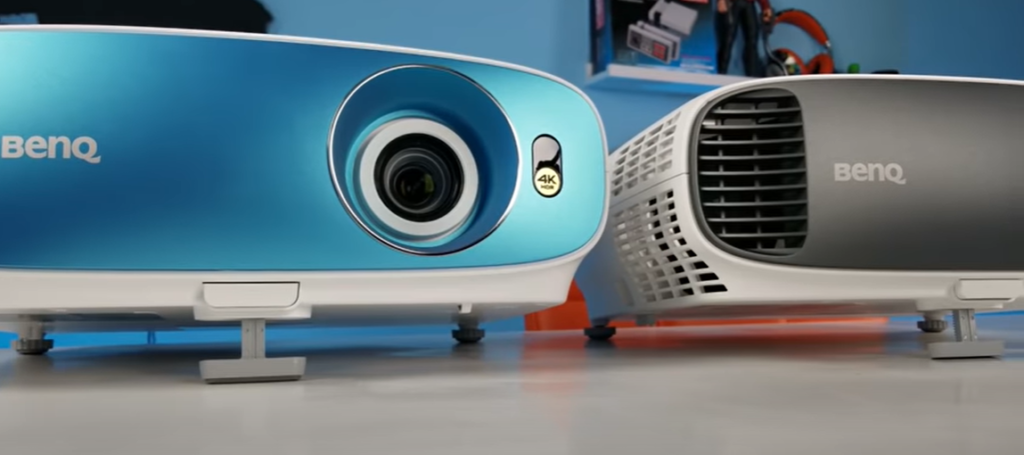
BenQ TK800M vs. HT2550: Other features to consider
Remote control
Every home theater enthusiast knows that the remote control is a crucial part of the experience. Both the BenQ TK800M and HT2550 come with ergonomic and intuitive remotes that make navigating through menus and adjusting settings a breeze. However, there are some slight differences between the two.
The BenQ TK800M’s remote has a backlit keypad, which can be very useful in a dark room. It also has dedicated buttons for each input source, making it easy to switch between devices. On the other hand, the HT2550’s remote has a more simple design and does not have backlighting. However, it does have a built-in laser pointer that can be handy when giving presentations or using the projector for business purposes.
HDR support
High Dynamic Range (HDR) is a relatively new technology that enhances the contrast and color of images, resulting in a more vibrant and lifelike picture. Both the BenQ TK800M and HT2550 have HDR support, but there are some differences between them.
The BenQ TK800M has HDR10 support, which is the most widely used format for HDR content. It also has HDR Brightness Enhancement, which is a feature that adjusts the projector’s brightness and contrast settings to better display HDR content. On the other hand, the HT2550 only has HDR support and does not have any additional features for improving HDR performance.
Speaker quality
While most people will likely connect external speakers or a soundbar to their projectors, it’s still worth mentioning the difference in speaker quality between the BenQ TK800M and HT2550.
The BenQ TK800M has 5-watt speakers built-in, which can produce decent sound for a small room or casual viewing. However, the HT2550 has slightly better sound with its 10-watt speakers. This may not be a significant factor for most buyers, but it’s worth considering if you plan on using the projector’s built-in speakers frequently.
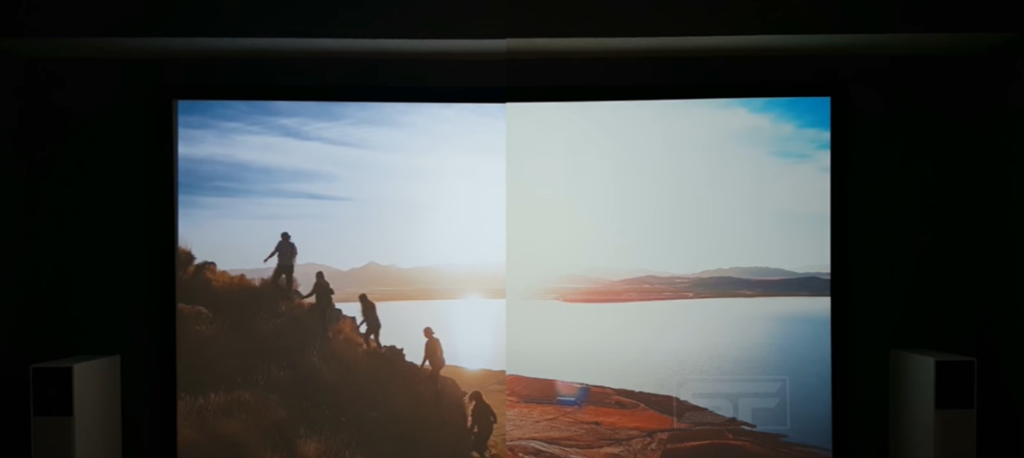
Projection method
The BenQ TK800M and HT2550 use two different projection methods – DLP (Digital Light Processing) and the newer 3LCD. DLP projectors tend to have better contrast and black levels, while 3LCD projectors typically have more accurate color reproduction.
The BenQ TK800M uses a single-chip DLP system, while the HT2550 uses a 3LCD system. This means that the TK800M may have slightly better contrast, while the HT2550 may have slightly more accurate colors. However, both projectors provide high-quality images and it ultimately comes down to personal preference.
Wireless connection Functions
In today’s world of advanced technology, wireless connectivity is a must-have feature for many buyers. The BenQ TK800M and HT2550 both offer some level of wireless connectivity, but there are some differences to note.
The BenQ TK800M has built-in Wi-Fi and Bluetooth capabilities, making it easier to connect wirelessly to devices such as laptops or smartphones. It also has a wireless projection feature, allowing you to stream content directly from your device to the projector without any cables. The HT2550, on the other hand, only has built-in Wi-Fi and does not have Bluetooth or wireless projection capabilities.
Pros & Cons of BenQ TK800M
Pros of BenQ TK800M
- 4K resolution: The most obvious pro of the BenQ TK800M is its 4K resolution, which provides a highly detailed and sharp image quality. This makes it ideal for watching movies, streaming content, or playing video games.
- High brightness: With 3,000 lumens of brightness, the BenQ TK800M can project a bright and clear image, even in well-lit rooms. This makes it perfect for use in living rooms or other areas where natural light may be present.
- HDR support: The TK800M also supports HDR (High Dynamic Range) content, which provides a wider range of colors and better contrast levels. This adds depth and vibrancy to images, making them more realistic and immersive.
- Low input lag: For gamers, the BenQ TK800M offers a low input lag of only 50ms. This means that there is minimal delay between pressing a button on your controller and seeing the action happen on screen, allowing for a more responsive gaming experience.
- Easy setup: The TK800M is designed to be simple and easy to set up, with features like vertical keystone correction and a 1.1x zoom that makes it easier to adjust the image to fit your screen.

Cons of BenQ TK800M
- Limited lens shift: The BenQ TK800M only has a limited amount of lens shift, which means it may not be able to project onto certain areas of the screen if it is not directly facing it. This can be a hindrance for those who need more flexibility in projector placement.
- No 3D support: Unlike some other projectors on the market, the TK800M does not offer 3D compatibility. While this may not be a dealbreaker for everyone, it is worth noting for those who enjoy 3D content.
- Fan noise: Some users have reported that the TK800M can be quite loud, especially in eco mode. This may not be noticeable for those watching movies or playing games with sound on, but it could be a distraction for others.
- Limited connectivity: The TK800M only has two HDMI ports and no USB ports, which may be limiting for those who want to connect multiple devices. It also does not have built-in WiFi, so streaming content may require an external device.
- Short lamp life: The TK800M’s lamp is rated for only 4,000 hours of use, which is relatively low compared to other projectors on the market. This means that it may need to be replaced sooner, which can be costly. However, with proper care and maintenance, the lamp life can be extended [2].
Pros & Cons of BenQ HT2550
Pros of BenQ HT2550
- High resolution: The BenQ HT2550 offers 4K Ultra HD resolution, which is four times the number of pixels found in Full HD projectors. This results in an incredibly sharp and detailed image quality that gives a true cinematic experience.
- HDR support: The HT2550 also supports High Dynamic Range (HDR) technology, which allows for a wider range of colors and contrast, resulting in more realistic and vibrant images.
- Budget-friendly: Compared to other 4K projectors on the market, the BenQ HT2550 is relatively affordable. This makes it a great option for those looking to upgrade to 4K without breaking the bank.
- Easy set-up: The projector comes with a simple and intuitive set-up process, making it easy for even non-tech-savvy users to get started. It also offers flexible placement options with its vertical lens shift and 1.2x zoom function.
- Wide color gamut: The HT2550 has a wide color gamut that covers 96% of the Rec.709 color space, ensuring accurate and vibrant colors in every frame.
Cons of BenQ HT2550
- Limited brightness: While the projector boasts high resolution and HDR support, its brightness level is slightly lower than some of its competitors. This can result in a slightly dimmer image quality, especially in well-lit rooms.
- No built-in speakers: The BenQ HT2550 does not come with built-in speakers, so users will need to purchase external audio equipment for a complete home theater experience.
- Limited connectivity options: The projector only has two HDMI ports, limiting the number of devices that can be connected at once. It also lacks Bluetooth and Wi-Fi connectivity, which may be a drawback for some users.
- No 3D support: Unlike some other projectors on the market, the HT2550 does not support 3D content, which may be a disappointment for those who enjoy watching 3D movies.
- Fan noise: The projector’s fan can get quite loud during operation, which may be distracting for some viewers [3].
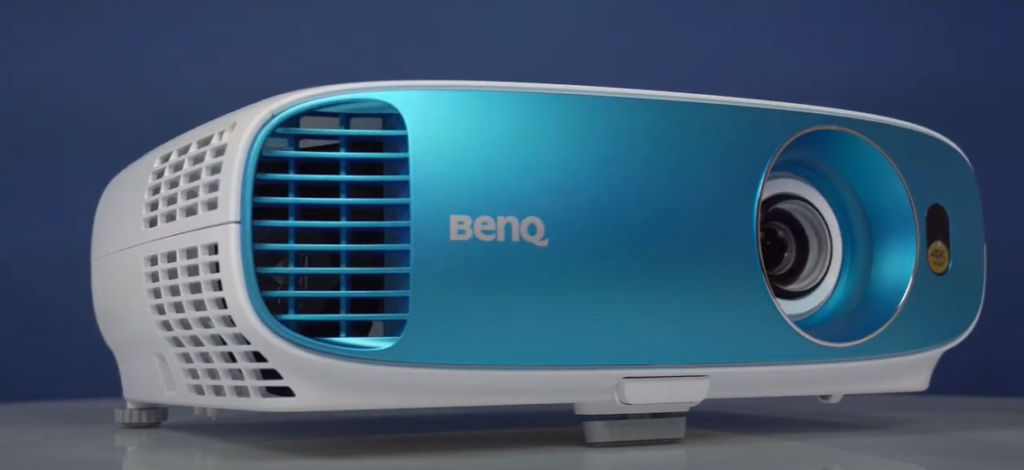
FAQ
What are the main differences between BenQ TK800 and TK800M?
The BenQ TK800 and TK800M are two models of 4K home projectors made by the Taiwanese company, BenQ. They both offer stunning image quality and a variety of features, but there are several key differences between the two models.
- Brightness – One of the biggest differences between the BenQ TK800 and TK800M is their brightness levels. The TK800M boasts a higher brightness of 3000 lumens, while the TK800 has a slightly lower brightness of 2800 lumens. This means that the TK800M is better equipped to handle brighter rooms or larger screens, while the TK800 may struggle in these conditions.
- Color Accuracy – Another important difference between the two models is their color accuracy. The TK800M uses a more advanced color wheel with RGBRGB technology, while the TK800 utilizes an RGBW color wheel. This means that the TK800M can produce more vibrant and accurate colors, especially in darker scenes.
- Gaming Features – If you are a gamer, then the TK800M may be the better choice for you. It offers a specialized game mode with low input lag and enhanced contrast for a more immersive gaming experience. The TK800 also has a game mode, but it does not have the same level of features and customization.
- Design – Visually, the BenQ TK800M and TK800 are quite similar with their sleek white exteriors. However, the TK800M has a more compact design and is slightly lighter in weight, making it easier to transport or mount on a ceiling.
Is BenQ TK800M native 4K?
Yes, the BenQ TK800M is indeed a native 4K projector. This means that it boasts an impressive resolution of 3840×2160 pixels, delivering exceptional clarity and detail. With its native 4K capability, the TK800M eliminates the need for any upscaling or compression, ensuring that you can enjoy true 4K content in all its glory. This remarkable projector utilizes Texas Instruments’ XPR technology, which plays a pivotal role in achieving the stunning native 4K resolution that brings your movies, sports, and games to life with unparalleled precision and realism.
Is BenQ TK800M good for gaming?
Yes, the BenQ TK800M is a great choice for gaming. With its specialized game mode, low input lag, and enhanced contrast, this projector offers a more immersive and responsive gaming experience. Whether you’re playing fast-paced action games or visually stunning RPGs, the TK800M can keep up with your gameplay and deliver vibrant colors and sharp details. Additionally, the TK800M’s 4K resolution ensures that you can see every detail in your games, making for a truly immersive gaming experience.
What is the refresh rate of BenQ TK800M 4K?
The BenQ TK800M has a refresh rate of 60Hz for its native 4K resolution. This means that it can display up to 60 frames per second, providing smooth and fluid visuals for your movies, sports, and games. The high refresh rate is especially beneficial for gaming as it allows for a more responsive and realistic gaming experience without any blurring or lag. However, it is worth noting that the TK800M also has a 120Hz motion enhancer feature for smoother motion and less judder in fast-moving scenes.
What are the connectivity options for BenQ TK800M?
The BenQ TK800M offers a variety of connectivity options to suit your needs. It has two HDMI ports, one USB port, and one audio output, allowing you to connect multiple devices such as Blu-ray players, gaming consoles, streaming devices, and more. It also has built-in Wi-Fi for wireless screen mirroring and streaming from your smartphone or laptop. Additionally, the TK800M has a LAN port for wired internet connection and a built-in speaker for convenient audio playback.
How do you set up and install BenQ TK800M?
The setup and installation process for the BenQ TK800M is relatively straightforward. First, you will need to find a suitable location for the projector with enough space and a flat surface to mount or place it on. Then, connect your desired devices to the projector using HDMI or Wi-Fi. Finally, adjust the focus and keystone correction for the best image quality, and you’re all set to start enjoying your favorite content on the big screen. The TK800M also comes with a user-friendly remote control for easy navigation and customization of settings. Alternatively, you can also use BenQ’s Smart Control app for even more convenient control over your projector.
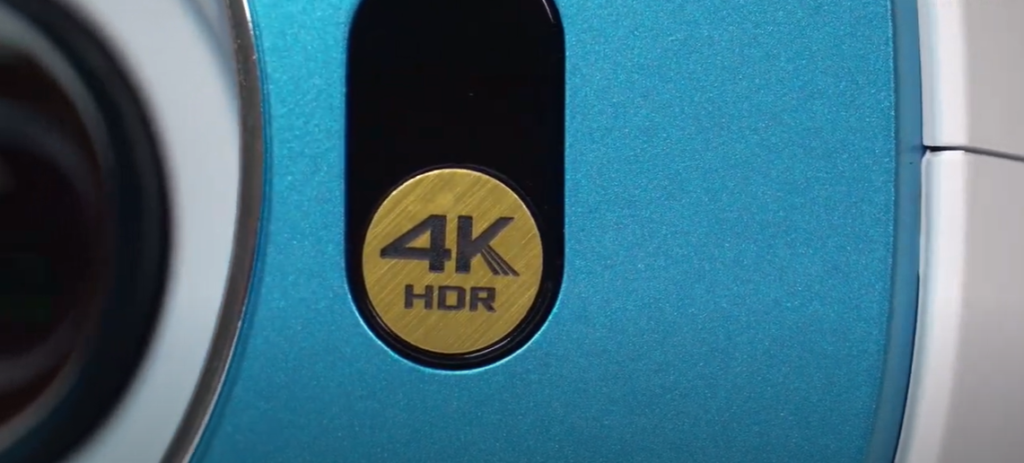
Why do you need a 4K projector for your home?
A 4K projector like the BenQ TK800M offers many benefits for your home entertainment setup. Here are some reasons why you may want to consider getting a 4K projector:
- Superior Image Quality: With four times the resolution of Full HD, 4K projectors deliver incredibly sharp and detailed images with vibrant colors.
- Immersive Viewing Experience: A large screen and crisp resolution allow you to feel fully immersed in your movies, sports, or games.
- Versatility: 4K projectors can be used for a wide range of content, including streaming services, Blu-ray discs, gaming consoles, and more.
- Future-proofing: As more content becomes available in 4K resolution, investing in a 4K projector ensures that you can enjoy the best quality for years to come.
- Space-saving: Instead of a bulky TV, a 4K projector allows you to have a large screen without taking up much space in your room.
Overall, the BenQ TK800M offers impressive features and performance as a native 4K projector, making it an excellent choice for those looking to enhance their home entertainment experience. With its advanced technology, sleek design, and versatile connectivity options, the TK800M is a top contender in the 4K projector market. So whether you’re a movie buff, sports fan, or avid gamer, the BenQ TK800M has something to offer for everyone.
When to choose BenQ TK800M over TK800?
While both the BenQ TK800M and TK800 offer impressive features, some key differences may influence your decision. Here are a few scenarios where you may want to consider choosing the TK800M over the TK800:
- Gaming: If you are primarily using the projector for gaming, then the specialized game mode and lower input lag of the TK800M make it a better choice.
- Compact design: If you have limited space or plan to mount the projector on a ceiling, then the smaller size and lighter weight of the TK800M may be more suitable.
- Enhanced Contrast: If you prefer deeper blacks and brighter whites in your image quality, then the slightly higher contrast ratio of the TK800M may be worth considering.
- Wi-Fi connectivity: If you frequently stream content from your smartphone or laptop, then the built-in Wi-Fi of the TK800M can provide more convenient wireless connectivity compared to the TK800.
Ultimately, both projectors offer exceptional performance and value for their respective price points. It ultimately depends on your specific needs and preferences when choosing between the TK800M and TK800. So, evaluate your requirements and choose the one that best fits your home entertainment setup. Overall, both projectors are excellent options for experiencing stunning 4K resolution in the comfort of your own home.
Is it worth upgrading from TK800 to TK800M?
Whether it is worth upgrading from the BenQ TK800 to the TK800M depends on your current setup and personal preferences. The TK800M offers some improvements such as a specialized game mode, lower input lag, enhanced contrast, and built-in Wi-Fi that may be attractive to gamers and those looking for added convenience. However, if you are satisfied with the performance of your TK800 and do not require these additional features, then upgrading may not be necessary. Ultimately, it is a personal decision based on your usage and budget. If you are in the market for a new 4K projector and want the latest technology and enhanced features, then the BenQ TK800M is worth considering.
Useful Video: BenQ TK800 vs HT2550 4K Projector – Which One Is Better?
Conclusion Paragraph
So, BenQ TK800M or BenQ HT2550 projector? The answer to this question depends on your individual needs and preferences. Both models offer stunning 4K UHD resolution, HDR compatibility, and a variety of connectivity options. For those looking for a budget-friendly option with impressive picture quality, the BenQ TK800M may be the better choice. Its bright lamp and dedicated game mode make it a great option for home entertainment or gaming. On the other hand, if you’re willing to invest a bit more for enhanced color accuracy and overall performance, the BenQ HT2550 may be the better option. Its CinematicColor technology and low input lag make it a top choice for movie lovers and serious gamers.
References:
- https://visualjacker.com/benq-tk800m-vs-ht2550/
- https://www.techspot.com/products/projectors/benq-tk800m.200287/
- https://www.techradar.com/reviews/benq-ht2550-4k-hdr-projector




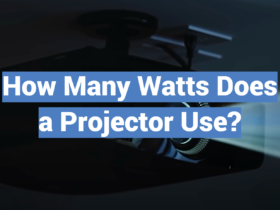
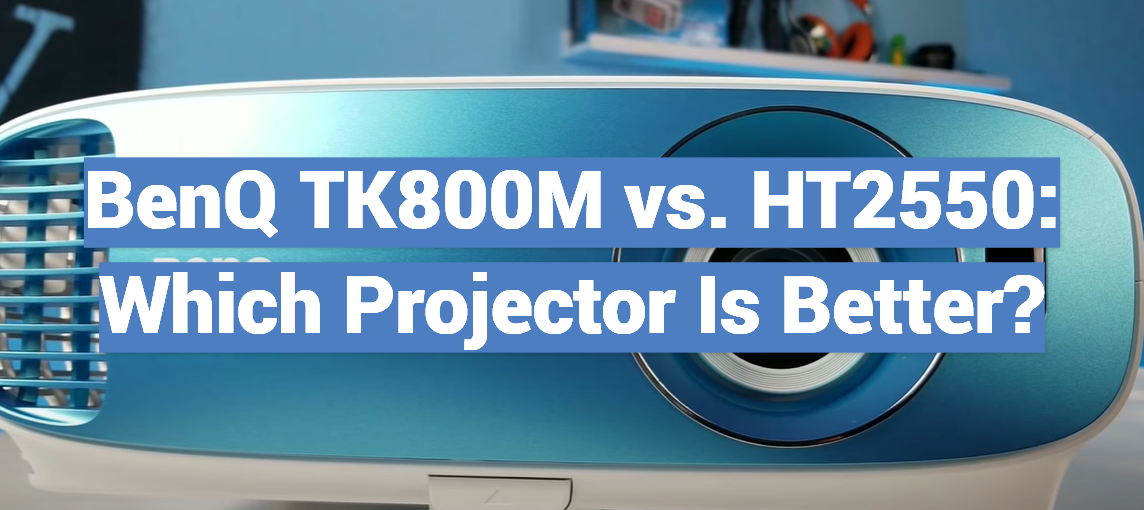

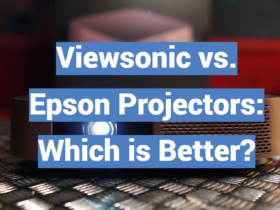
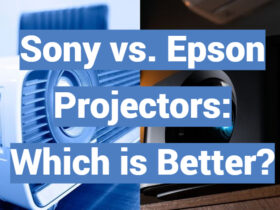
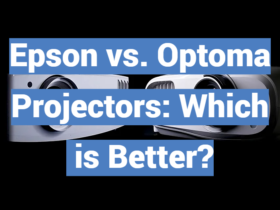
Leave a Review